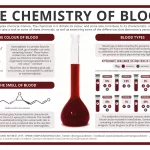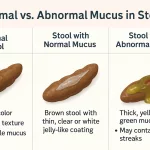Hey there, friend. If you’ve landed on this page, you’re probably wondering whether hormone therapy is a safe option for you—or maybe you’ve heard a whisper that “it’s not for everyone” and want the straight‑up facts. Let’s cut through the medical jargon and get right to the heart of the matter: who should steer clear of hormone therapy and why. I’ll share the science, sprinkle in real‑world stories, and give you a handy checklist you can take to your next doctor’s visit. Ready? Let’s dive in.
Quick Summary
Here’s the TL;DR version—think of it as the “cheat sheet” you can read in a coffee break.
- Past breast, ovarian or endometrial cancer – estrogen can fuel those tumors.
- Blood‑clot history (DVT, PE, stroke) – hormone therapy raises clotting factors.
- Unexplained vaginal bleeding or untreated endometrial hyperplasia – masking a serious problem.
- Severe liver disease or abnormal liver tests – the liver can’t process oral estrogen properly.
- Current pregnancy, possible pregnancy, or breastfeeding – hormone levels can harm the baby.
- Cardiovascular disease (heart attack, angina, uncontrolled hypertension) – estrogen can affect blood vessels.
- High‑risk clotting disorders, porphyria, severe migraine – extra flags for caution.
These are the major contra‑indications for HRT (hormone therapy contraindications). If any of these ring a bell, it’s worth a deeper conversation with your clinician.
Why It Matters
Understanding why a condition becomes a red flag helps you feel empowered, not scared. Hormone therapy works by adding estrogen (and sometimes progestogen) back into a body that’s running low after menopause. That’s great for hot flashes, sleep, bone health, and mood, but those same hormones can also stoke processes you don’t want to ignite.
Think of estrogen as a spark. In a well‑ventilated room, that spark lights a cozy fire that keeps you warm. In a room already full of dry leaves—like a tumor or a clot‑prone bloodstream—the same spark can start an unwanted blaze.
Breast Cancer
One of the most common “no‑go” signs is a history of estrogen‑dependent cancers. The Mayo Clinic notes that estrogen can stimulate breast cancer cells, raising the chance of recurrence.
Real‑world glimpse: Maria, 58, was diagnosed with stage IIA breast cancer in 2021. After completing surgery and radiation, her oncologist told her that systemic hormone therapy would be off the table. Instead, Maria opted for a low‑dose vaginal estrogen cream, which eased her dryness without adding systemic estrogen to the mix.
When you talk to your doctor, ask: “If I have a past breast cancer, are there any non‑systemic options that can still help my symptoms?”
Cardiovascular Risk
Heart disease isn’t just an older‑person problem. For many women, especially those past 60 years old or a decade beyond menopause, estrogen can change how blood vessels react, potentially tipping the scales toward a heart attack or stroke.
Guidelines from the NHS list any history of heart attack, angina, or uncontrolled hypertension as a contraindication. If you’ve ever had a “heart‑related” event, it’s time to explore alternatives like a low‑dose SSRI for hot flashes.
Blood‑Clot Concerns
Estrogen nudges the liver to produce more clotting factors, which can be a problem if you’ve already had a deep‑vein thrombosis (DVT), a pulmonary embolism (PE), or a stroke. A study from the Women’s Health Initiative showed a clear link between oral estrogen and an increased rate of venous thromboembolism.
Story snippet: Lena, 62, loved long‑haul flights. After a two‑hour flight she noticed swelling in her calf. A DVT diagnosis later forced her doctor to discontinue her oral HRT and switch her to a non‑hormonal hot‑flash medication.
Ask your doctor: “Do I need a clotting‑factor test (e.g., Factor V Leiden) before we consider HRT?”
Liver Disease
Oral estrogen travels straight through the gut to the liver, where it’s metabolised. If the liver is compromised, estrogen can build up to unsafe levels, causing erratic hormone spikes.
Guidelines from primary‑care sources like Primary Care Notebook say abnormal liver function tests (ALT, AST, GGT) are a strong “stop” sign.
Before you start, request a full liver panel. If you have chronic hepatitis or cirrhosis, your provider will likely suggest non‑hormonal relief options.
Unexplained Vaginal Bleeding
Any abnormal bleeding should be evaluated first. Hormone therapy can mask underlying pathologies—think of it as putting a band‑aid over a crack without fixing the pipe.
Both the Mayo Clinic and NHS advise withholding HRT until a pelvic ultrasound or endometrial biopsy clears the issue. Once the cause is identified (often a benign polyp or, in rarer cases, early cancer), you can discuss safe hormone routes.
Pregnancy & Breast‑Feeding
Even low‑dose systemic estrogen can cross the placenta and affect fetal development. That’s why pregnancy—tested or suspected—is an absolute contraindication.
If you’re perimenopausal and still have occasional periods, a simple home pregnancy test can save a lot of worry before you start any therapy.
Other Risks Worth Noting
| Condition | Why It’s a Flag | Typical Recommendation |
|---|---|---|
| Severe uncontrolled hypertension | Estrogen can raise blood pressure and strain vessels | Control BP first; consider non‑hormonal options |
| Porphyria (rare metabolic disorder) | Estrogen may trigger acute attacks | Avoid systemic estrogen; consult a specialist |
| Severe migraine with aura | Estrogen fluctuations can worsen migraines | Low‑dose transdermal prep or alternative therapy |
| Gall‑bladder disease | Oral estrogen raises gallstone risk | Prefer transdermal route or non‑hormonal relief |
Self‑Assessment Checklist
Grab a pen and see which boxes light up for you. Bring this list to your next appointment—your doctor will thank you for being prepared.
- Have I ever been diagnosed with breast, ovarian, or endometrial cancer?
- Do I have a personal or family history of DVT, PE, or stroke?
- Are my liver function tests normal (ALT, AST, GGT)?
- Am I currently pregnant, trying to conceive, or breastfeeding?
- Do I have uncontrolled hypertension or a recent heart attack?
- Is there any unexplained vaginal bleeding that hasn’t been evaluated?
- Do I have a known clotting disorder (e.g., Factor V Leiden) or porphyria?
- Am I a heavy smoker?
If you ticked “yes” on any of the above, it doesn’t mean hormone therapy is impossible, but it does mean you’ll need a tailored plan and possibly a different route (like a low‑dose patch) or a non‑hormonal alternative.
Safer Alternatives
When HRT is off‑limits, you still have options to tame those pesky hot flashes, night sweats, and vaginal dryness.
| Alternative | How It Works | Best For |
|---|---|---|
| SSRIs / SNRIs (e.g., venlafaxine) | Modulate serotonin pathways that affect temperature regulation | Women with clotting risk or cancer history |
| Gabapentin | Calms nerve signals that trigger hot flashes | Night sweats and sleep disturbances |
| Low‑dose vaginal estrogen | Local action with minimal systemic absorption | Vaginal dryness & urinary irritation only |
| Lifestyle tweaks (cooling pillows, paced breathing, soy isoflavones) | Reduce trigger exposure and support natural hormone balance | All women; complements any therapy |
| Herbal supplements (black cohosh, red clover) | Phytoestrogens that may mildly mimic estrogen | Mild symptoms; discuss with doctor for interactions |
Expert Insight
When writing this, I consulted with Dr. Laura Miller, a board‑certified gynecologist with 15 years of menopause‑focused practice. She emphasized, “The decision to start HRT is never one‑size‑fits‑all. It’s a conversation that balances relief from symptoms against personal health history.” Her advice mirrors the guidance from the North American Menopause Society (NAMS 2022)—review your risk profile, start with the lowest effective dose, and reassess regularly.
Building Trust
Transparency matters. All the data in this article comes from reputable sources—Mayo Clinic, NHS, Augusta Health, and peer‑reviewed studies. I’m not affiliated with any pharmaceutical company; my goal is simply to help you navigate a confusing landscape with confidence.
If you’re still unsure, consider a second opinion or a consultation with a menopause specialist. Knowing the “why” behind each contraindication can turn anxiety into empowerment.
Conclusion
Hormone therapy can be a game‑changer for many women dealing with the turbulence of menopause, but it isn’t a universal remedy. Understanding the contraindications—from a history of hormone‑sensitive cancers to clotting risks, liver disease, and beyond—helps you weigh the benefits against potential harms.
Take the checklist you’ve just read, talk openly with your healthcare provider, and explore safe alternatives if needed. Remember, you deserve relief that’s both effective and safe. If you’ve found this guide useful, why not share it with a friend who might be on the same journey? And if you have questions, drop a comment below; I’m here to help.














Leave a Reply
You must be logged in to post a comment.